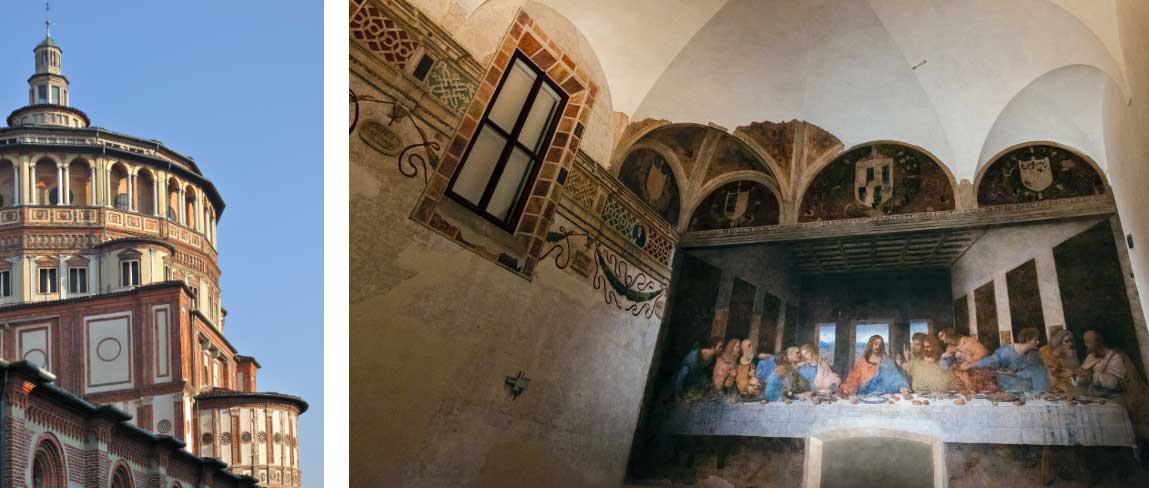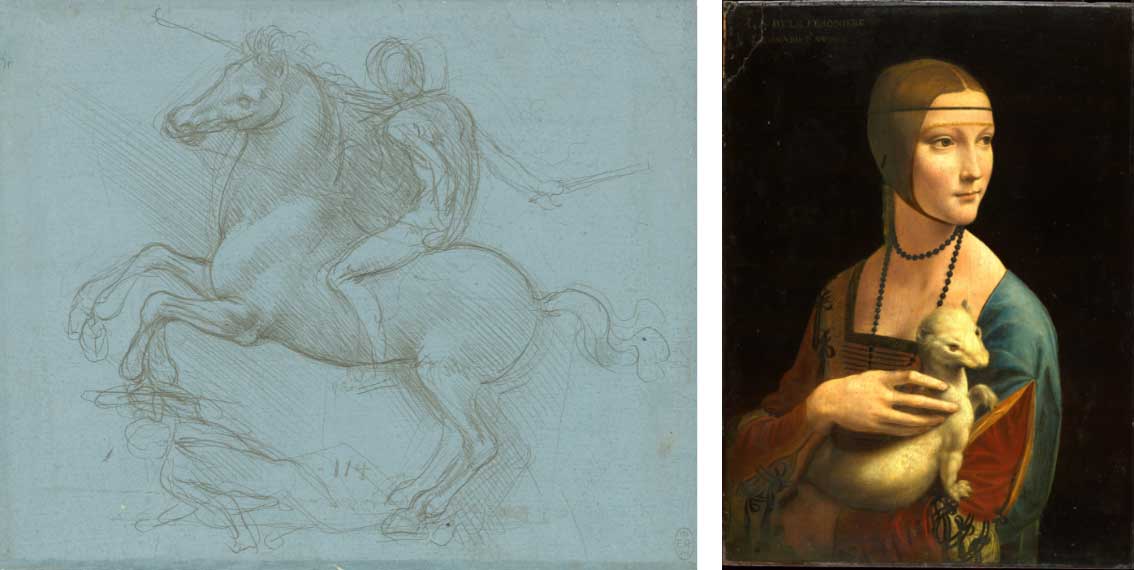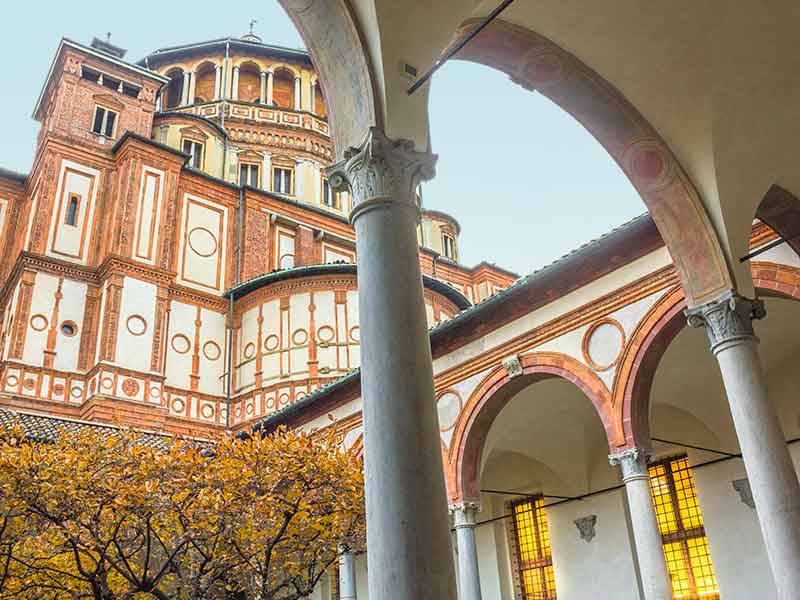Since the 14th century, in the Tuscan tradition on which Leonardo drew, this room has also been referred to by the term “Cenacolo”. And since the early 16th century, the term has also been used in Italian to designate the paintings of the Last Supper that generally adorn refectories.

On the left, Saint Maria delle Grazie, Milan. On the right, the whole north wall of the refectory with the Last Supper
History has separated from its original context a space that was closely embedded in the monastery’s everyday life. The route we follow to reach it today enables us only in part to understand its ties with the rest of the building. Along the route that leads to the refectory, in the first corridor, there remain large fragments of frescoes dating from the mid-17th century, depicting a scene of martyrdom, perhaps the episode of 49 Dominicans slain at Sandomierz. The second section overlooks the Cloister of the Dead, so called because it once contained the graves of the friars.
Ludovico Sforza, known as Ludovico il Moro, had created a flourishing court in Milan, attracting artists, intellectuals and musicians. Between 1478 and 1482 Donato Bramante and Leonardo da Vinci moved to Milan from Florence. The two artists, among the most important figures in the Italian Renaissance, both worked on the monastery of Santa Maria delle Grazie, giving rise to one of the most extraordinary monumental complexes in the history of Italian art.

On the left, A design for an equestrian monument, Leonardo da Vinci, 1482-1493. Windsor, Royal Library – Royal Collection Trust © Her Majesty Queen Elizabeth II 2019.
On the right, The Lady with the Ermine, Leonardo da Vinci, 1488-1490. National Museum, Kraków, Poland
Leonardo arrived in Milan in 1482, after introducing himself to the ruler of the city with a long letter in which he listed his abilities as painter, musician, military engineer and architect. He remained at Ludovico’s court until 1499. He was employed as an artist, the inventor of marvelous spectacles and set designs, as well as an engineer and sculptor. From this period date his studies of the systems of Lombard canals, the portrait of Ludovico’s favorite, Cecilia Gallerani, known as The Lady with the Ermine (now in Krakow), and the project for the Equestrian Monument to Francesco Sforza, Ludovico il Moro’s father, which Leonardo was unable to complete. The decoration of the Sala delle Asse in the Castello Sforzesco also remained unfinished.

On the left, Sala delle Asse, detail, Leonardo da Vinci, 1498. Milano, Castello Sforzesco ©Comune di Milano – Castello Sforzesco.
On the right, Leonardo da Vinci mostra a Ludovico il Moro le conche del Naviglio, Cherubino Cornienti, 1858. Milano, Galleria d’Arte Moderna © Saporetti Immagini d’arte
At the end of the century Ludovico Sforza wished to make Santa Maria delle Grazie a place to celebrate his power and his family mausoleum. He financed important commissions in the complex, such as the restructuring of the tribune of the church, which he entrusted to Donato Bramante. The decoration of the refectory was entrusted to Leonardo da Vinci, from whom Ludovico commissioned a painting of Christ at the Last Supper with the twelve apostles.

Saint Maria delle Grazie, Milan

Leonardo’s talent, the entrepreneurial spirit of Ludovico Maria Sforza and Milan in Renaissance.
From Tuesday to Sunday:
from 8.15 a.m. to 7 p.m.
(with last admission at 6.45 p.m.)
To guarantee everyone a safe visit,
in this first experimental phase,
the visits last 15 minutes for
a maximum number of 40 people at a time
Reservations are required.
Reservations* for the Last Supper Museum will open every three months.
(*Admissions for the February–April 2026 quarter will go on sale on Wednesday, December 17, starting at 12:00 p.m., through the usual sales channels.)